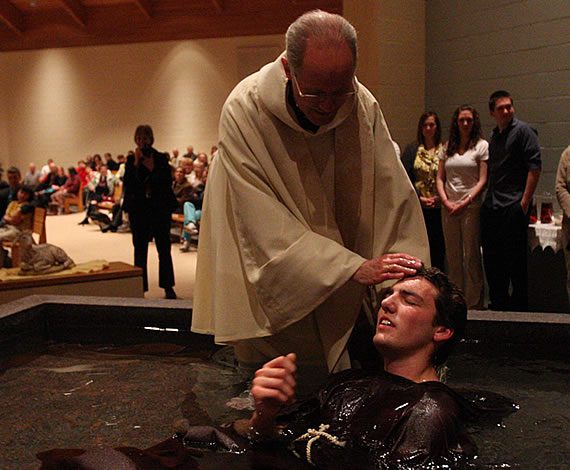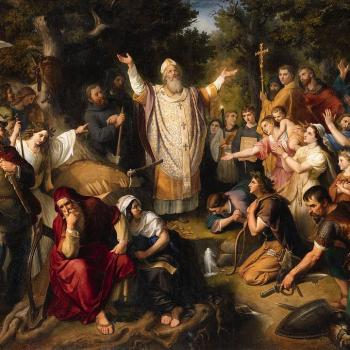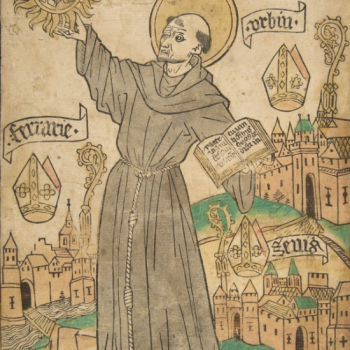This week I was asked:
I would like to get Baptized, how do I do it?
In the Catholic Church we do it through a bit of a complicated process which we call the Rite of Christian Initiation of Adults.
You can break down the process into nine steps:
Step One: Go to your local Parish
Step Two: Find out when their next RCIA program starts
Step Three: Begin exploring the faith as you go through the period of evangelization
Step Four Go through the rite of Acceptance into the order of the catechumens
Step Five:Enter the Period of the catechumenate
Step Six Go through the Rite of the Enrollment of names
Step Seven Go through the period of purification and enlightenment
Step Eight Participate in the Celebration of the Sacraments of initiation (probably at next year’s Easter vigil)
Step Nine Go through the period of postbaptismal catechesis.
OR you can just go to a local mega Church Elevation Church and get it all done as part of the weekly performance. (NOT recommended)
So why is there such a difference between the way Catholics do it and the way some evangelicals do it?
According to the rite itself (From RCIA sections 4-9):
The initiation of catechumens is a gradual process that takes place within the community of the faithful. By joining the catechumens in reflecting on the value of the paschal mystery and by renewing their own conversion, the faithful provide an example that will help the catechumens to obey the Holy Spirit more generously. The rite of initiation is suited to a spiritual journey of adults that varies according to the many forms of God’s grace, the free cooperation of the individuals, the action of the Church, and the circumstances of time and place. This journey includes not only the periods for making inquiry and for maturing, but also the steps marking the catechumens’ progress, as they pass, so to speak, through another doorway or ascend to the next level.
- The first step: reaching the point of initial conversion and wishing to become Christians, they are accepted as catechumens by the Church.
- The second step: having progressed in faith and nearly completed the catechumenate, they are accepted into a more intense preparation for the sacraments of initiation.
- The third step: having completed their spiritual preparation, they receive the sacraments of Christian initiation.
These three steps are to be regarded as the major, more intense moments of initiation and are marked by three liturgical rites: the first by the rite of acceptance into the order of catechumens; the second by the rite of election or enrollment of names; and the third by the celebration of the sacraments of Christian initiation.
The (3) steps lead to (4) periods of inquiry and growth; alternatively the periods may also be seen as preparing for the ensuing step.
- The first period consists of inquiry on the part of the candidates and of evangelization and the precatechu-menate on the part of the Church. It ends with the rite of acceptance into the order of catechumens.
- The second period, which begins with the rite of acceptance into the order of catechumens and may last for several years, includes catechesis and the rites connected with catechesis. It comes to an end on the day of election.
- The third and much shorter period, which follows the rite of election, ordinarily coincides with the Lenten preparation for the Easter celebration and the sacraments of initiation. It is a time of purification and enlightenment and includes the celebration of the rites belonging to this period.
- The final period extends through the whole Easter season and is devoted to the postbaptismal catechesis or mystagogy. It is a time for deepening the Christian experience, for spiritual growth, and for entering more fully into the life and unity of the community.
Thus there are four continuous periods: the precatechumenate, the period for hearing the first preaching of the Gospel; the period of the catechumenate, set aside for a thorough catechesis and for the rites belonging to this period ; the period of purification and enlightenment (Lenten preparation), designed for a more intense spiritual preparation, which is assisted by the celebration of the scrutinies and presentations ; and the period of postbaptismal catechesis or mystagogy, marked by the new experience of sacraments and community.
The whole initiation must bear a markedly paschal character, since the initiation of Christians is the first sacramental sharing in Christ’s dying and rising and since, in addition, the period of purification and enlightenment ordinarily coincides with Lent and the period of postbaptismal catechesis or mystagogy with the Easter season. All the resources of Lent should be brought to bear as a more intense preparation of the elect and the Easter Vigil should be regarded as the proper time for the sacraments of initiation. Because of pastoral needs, however, the sacraments of initiation may be celebrated at other times













